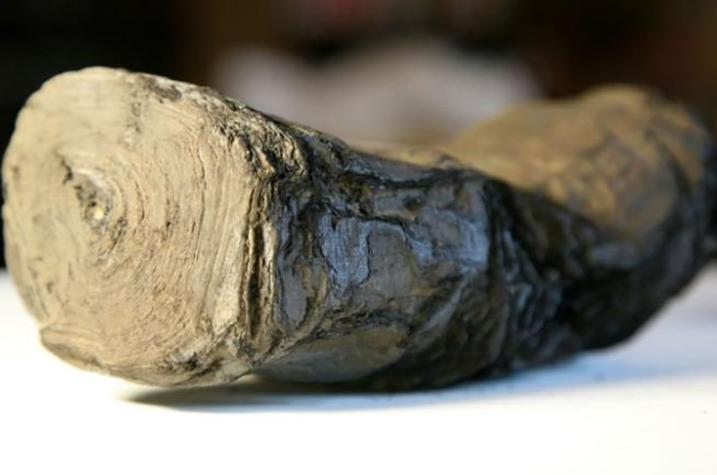UK's Brent Seales Using Light Brighter Than the Sun to Read Herculaneum Scrolls
LEXINGTON, Ky. (Oct. 10, 2019) — For nearly two decades, scholars around the world have been anxiously waiting as Brent Seales has doggedly labored to do the impossible — reveal the elusive texts within the carbonized Herculaneum scrolls.
With Seales at the helm, the University of Kentucky Digital Restoration Initiative (DRI) in the College of Engineering has been working to perfect a technique to non-invasively recover the 2,000-year-old fragile papyri.
In May, UK announced Seales — and his dedicated team of staff and student researchers — would travel to Diamond Light Source, a high-energy physics facility in Oxford, England.
"As one of the most powerful imaging facilities in the world — Diamond Light Source is truly world class, and access to light beam time there is extremely competitive," Seales said.
Thanks to recent funding from the National Endowment for the Humanities and the Mellon Foundation, the team was able to purchase the amount of beam time needed.
They recently returned from the national synchrotron facility with detailed images of two complete Herculaneum scrolls and four fragments. Seales believes the scans represent the team's best chance yet at revealing the contents.
"The resolution we are trying to achieve is very high," he explained. "The brightness and speed of the Diamond beam, and the ability to handle massive data sets, are crucial as a starting point for reading the scrolls."
The scrolls are among the most iconic — and inaccessible — of the world’s vast collection of damaged manuscripts. Buried and burned in the eruption of Mount Vesuvius in 79 CE, they offer a unique window to the ancient world.
Using cutting-edge technology, Seales is embarking on a daunting task. No other researcher has managed to create a comprehensive catalog of Herculaneum papyri.
The carbon ink poses a unique challenge. It's invisible to the human eye in micro-CT images. To address this, the team has developed a neural network that "learns" how patterns in the data look when ink is present, as opposed to how patterns appear when no ink is present. A machine learning algorithm is trained to detect and recognize the unique data signatures. The groundbreaking work was featured in a PLOS ONE article.
"We are using the Diamond facility to acquire scans of complete scrolls and also open fragments, with the hope that the open fragments will form a reference library — or training set — that can inform our software approach," Seales continued. "If things work as we expect, the scans and the machine learning will open up the chance to see the ink very clearly, and that is our primary goal."
Using light 10 billion times brighter than the sun, the team was able to capture scans of authentic Herculaneum material at unprecedented spatial resolution — marking a significant milestone, which has been been publicized in several national and international media outlets including CNN, The Times and ITV National News Online.
"The scan session promises to be a key moment in our quest for a reliable pathway to reading the invisible library."
Seales is continuing his work on the scrolls as a Getty Conservation Institute Scholar at The Getty in Los Angeles through March.
The goal is to develop a world-class facility on UK's campus that will be capable of providing the imaging date the team needs. More information about the DRI, and their efforts to become leaders in "unwrapping" cultural artifacts, can be found online.

As the state’s flagship, land-grant institution, the University of Kentucky exists to advance the Commonwealth. We do that by preparing the next generation of leaders — placing students at the heart of everything we do — and transforming the lives of Kentuckians through education, research and creative work, service and health care. We pride ourselves on being a catalyst for breakthroughs and a force for healing, a place where ingenuity unfolds. It's all made possible by our people — visionaries, disruptors and pioneers — who make up 200 academic programs, a $476.5 million research and development enterprise and a world-class medical center, all on one campus.




